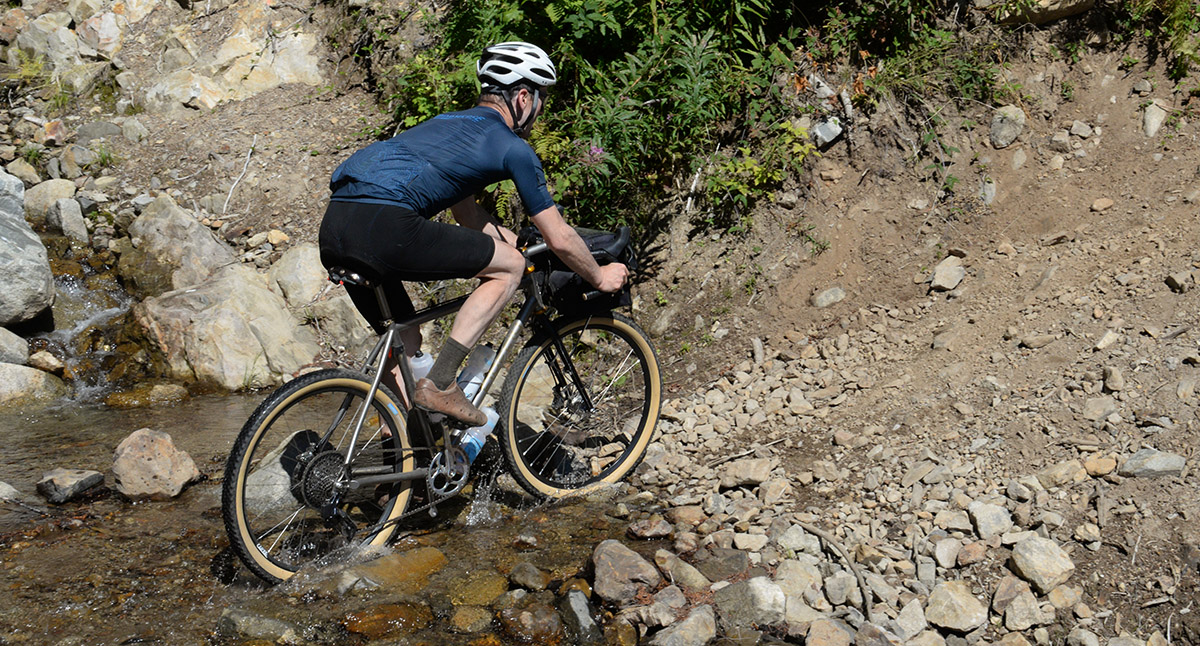34-Tooth One-By Cranks
One-by cranks are great when the going gets rough: There’s always another gear just a click away, and modern cassettes have a range that gets you up (and down) the steepest hills. They work great with 11- or 12-speed drivetrains: Few riders need 22 or even 24 gears. Many of those gears are overlapping anyhow. It makes sense to spread out the gears on one of those overlapping ranges a bit more—and do away with the second chainring altogether.
Except that many modern road and gravel cranks are designed for speedy racers, with chainrings that have 40 teeth or more. Even when coupled with a 44-tooth cassette cog, the 40×44 gear is not quite small enough for the gnarly climbs here in the Cascade Mountains. And if you go to even larger cogs, you end up with large steps between the gears. At the other end of the spectrum, the 40×10 is the same gear ratio that Eddy Merckx used to win multiple world championships. Few of us can pretend to need as big a gear as the ‘Cannibal’ during his prime.
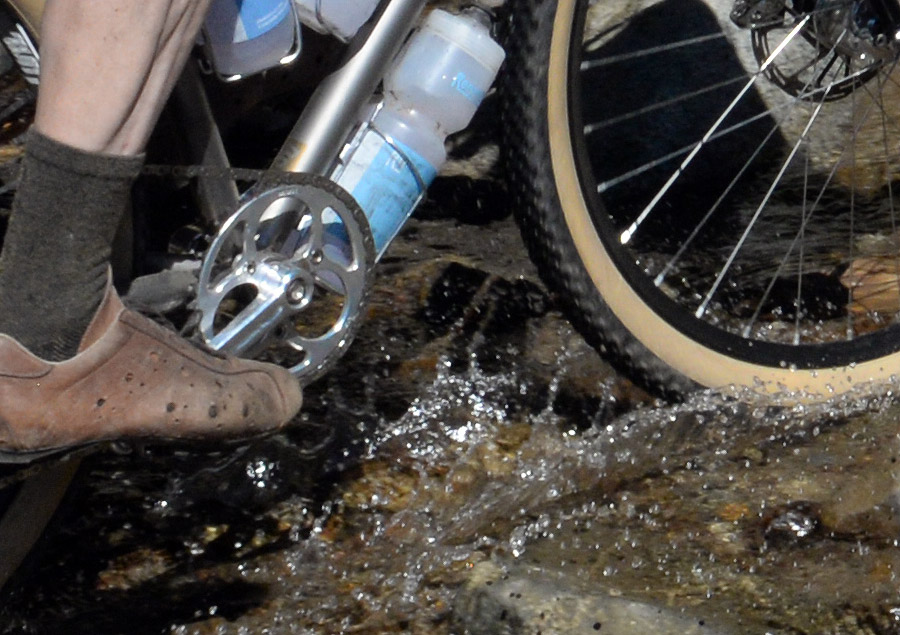
The solution is obvious: a smaller chainring. Reduce your chainring size by 15%: With our new 34-tooth one-by chainring, you’ve got the gears you need if you aren’t a pro racer. (We also offer a 40-tooth for super-strong riders and/or moderate terrain—and a 36-tooth if you’re in between or more of a masher than a spinner.)
The new 34-tooth one-by chainrings are now in stock. We offer them with Rene Herse one-by cranks or as retrofits. In fact, they can be fitted to all modern Rene Herse cranks, all the way back to the first ones we introduced more than a decade ago. Our components evolve constantly, but keeping Rene Herse products backward- and forward-compatible is an important part of our commitment to our customers. You can even convert a double or triple crank to a one-by with our smart chainring spacers that take the place of the inner chainring. We don’t want to sell you stuff that you don’t need!
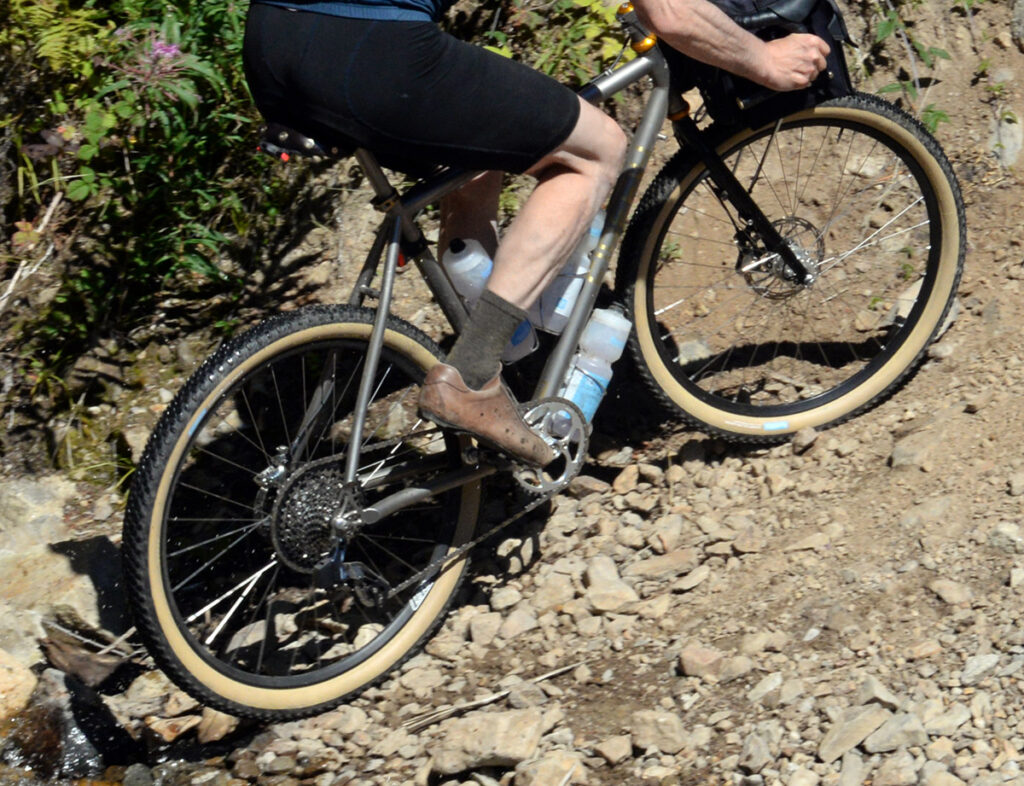
One-by cranks do have an issue that few makers talk about: chainline. To get all gears running smoothly, the chainring should align with the middle of the rear cassette. Except it rarely does, because the chainring and/or the crankarms would hit the chainstays. That’s why component makers push their cranks further outward. Most modern cranks have integrated spindles that come in just one length, or two at best. Those spindle lengths are chosen to clear the chainstays on the vast majority of bikes out there. Even if your bike is well-designed, the cranks and chainrings are still sitting further outward than necessary. And so we get drivetrains that make grinding noises in the smallest gears—exactly those where we put in the most power.
That’s where square tapers come in: They allow fine-tuning the chainline. On my Rene Herse Unbound XL bike, a 110 mm BB spindle results in a chainline that’s well-aligned with the rear cassette. My Firefly (shown here) has beefy titanium stays, so I needed a bit more clearance. This bike uses a 116 mm spindle—still very close to the ideal chainline. On all these bikes, I use the smallest gear a lot, and it runs smoothly even when the chain is covered with dust or mud.
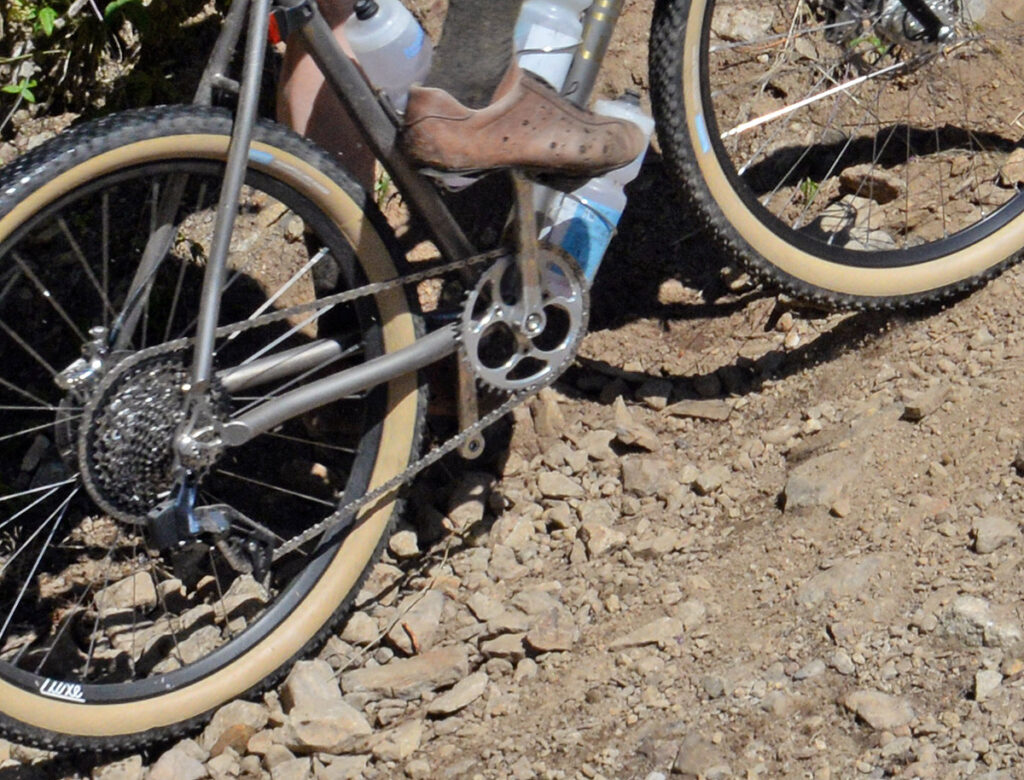
Fine-tuning your chainline also allows optimizing your Q factor and the width of your stance. Global Cycling Network recently wrote: “It’s often overlooked, but Q Factor can have a large impact on your comfort and performance.” They quoted B. X. Disley’s study (which was published in Bicycle Quarterly, and also in medical journals). Disley and his co-researchers found significant performance benefits and reduced injury risk with narrow Q factors. For trained cyclists, the optimum Q factors were narrower than most modern road cranks—and far narrower than many gravel cranks. Our Rene Herse cranks are optimized for low Q factors. On my Rene Herse Unbound XL bike, with a one-by, the Q factor is just 142 mm. On my Firefly with its beefy stays, it’s 148 mm—about the same as current road cranks. And that’s with ultra-wide 54 mm tires on both bikes.
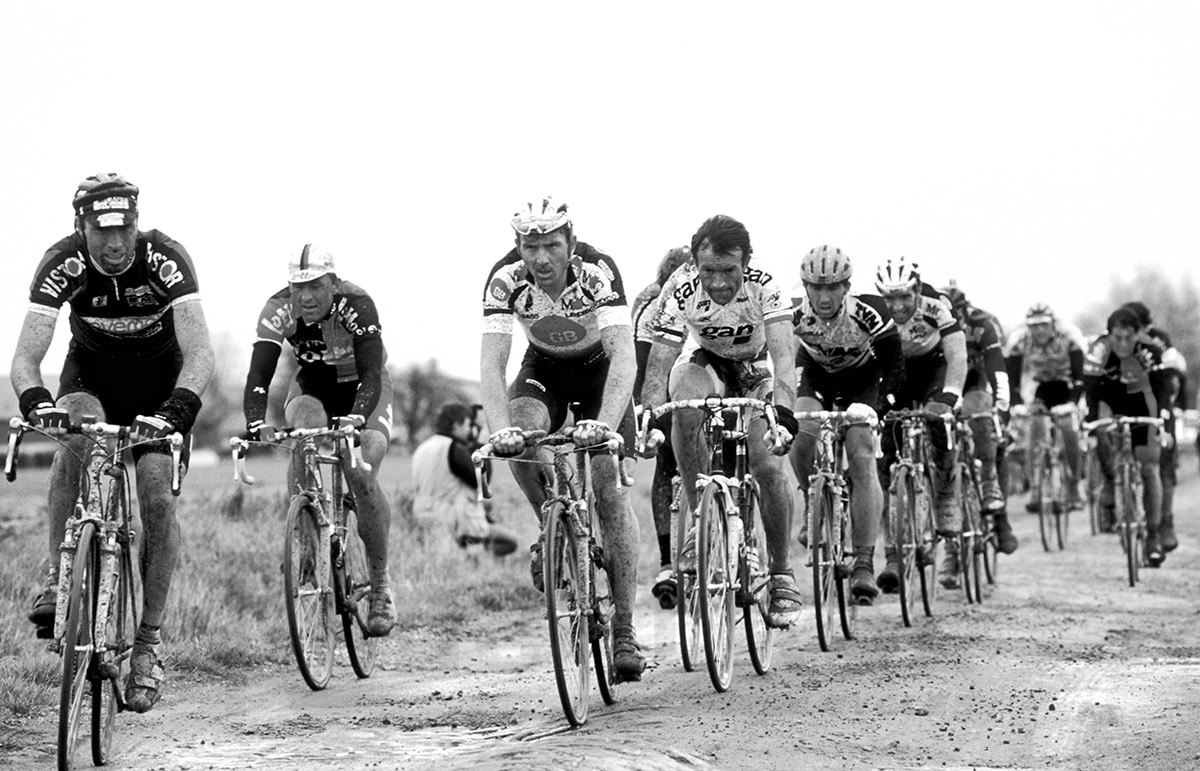
For anybody worried about the strength of square-taper cranks, it’s good to remember that they’ve proven themselves for decades. Just look at all those photos from old Paris-Roubaix, when racers tackled the cobblestones on 25 mm tires and square-taper cranks. Even under those harsh conditions, cranks weren’t coming loose or breaking. (Titanium bottom brackets turned out to be a less-successful innovation.)

On my own bike, the same set of Rene Herse one-by cranks has lived through Unbound XL, two Arkansas High Country Races (above), an FKT ride in the Dark Divide 300, and many other adventures—without any problems or unusual wear. (And no, I don’t carry a crank bolt wrench in my toolkit. In fact, I rarely carry any tools beyond spare tubes, because our components are designed to be ultra-reliable.)
In fact, Rene Herse cranks are among the strongest and most reliable cranks anywhere. The arms are net-shape forged, which optimizes the grain alignment in the aluminum. Together with using the best raw materials and some innovative manufacturing techniques, this results in superior strength. That means we can use less material: Rene Herse cranks are among the lightest in the world—much lighter than CNC cranks.
Despite being ultra-light, Rene Herse cranks have passed independent tests for the most stringent EN ‘Racing Bike’ standard for fatigue resistance. (We are not aware of any other cranks from small makers that have passed this test.) For one-by cranks, durability is especially important, since they tend to get ridden on rough and steep terrain, where the loads on the cranks can be extreme.
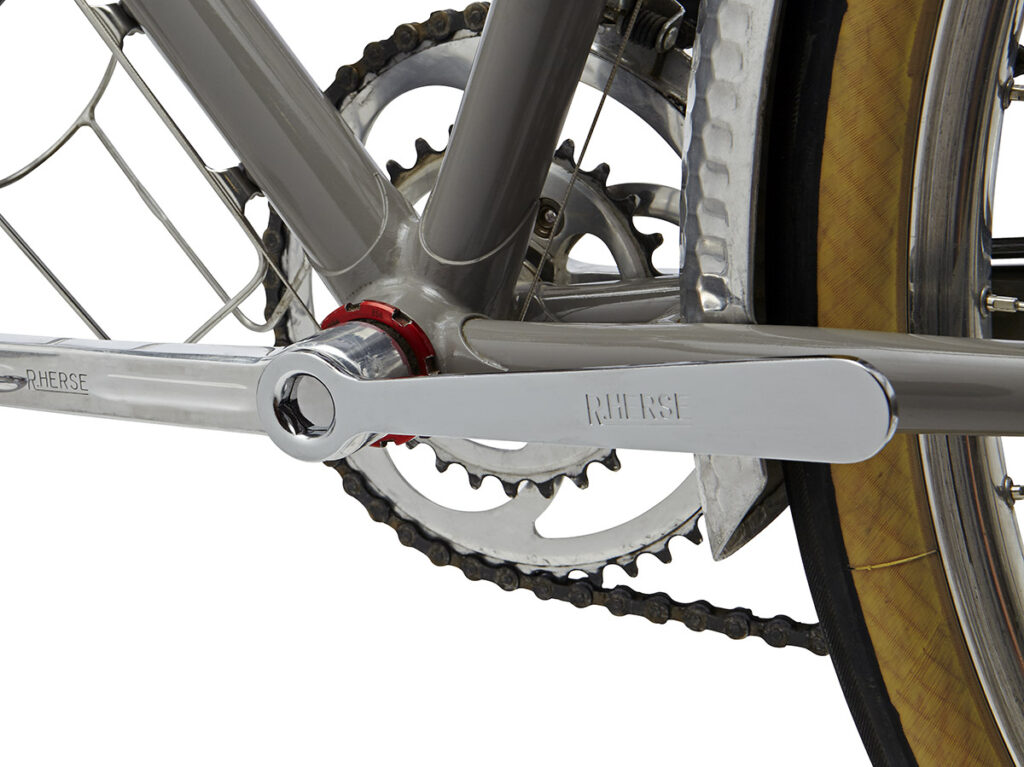
With the new chainrings, we’ve also received a restock on our crank wrenches. These ‘peanut butter’ wrenches got their nickname for their flat shape. They are made from food-grade materials, so you can use them to make sandwiches—but their real mission is to give you a good feel for how much to tighten the bolts of square-taper cranks.
Torque wrenches can give inconsistent readings with square tapers: You want to tighten the bolt until the crank stops moving further onto the spindle. The actual torque can vary, since it’s a sliding surface, not a bolt that reaches a hard stop. While it’s almost impossible to over-tighten our ultra-strong Rene Herse cranks, the flat shape of the ‘peanut butter’ wrench gives you a torque limit that you feel in your hand: When it becomes really uncomfortable to push on the wrench, stop. It doesn’t sound very sophisticated, but it’s remarkably effective. (You can use Allen key crank bolts, but flex in the 8 mm Allen wrench can make it hard to judge the torque you’re putting into the bolt.)
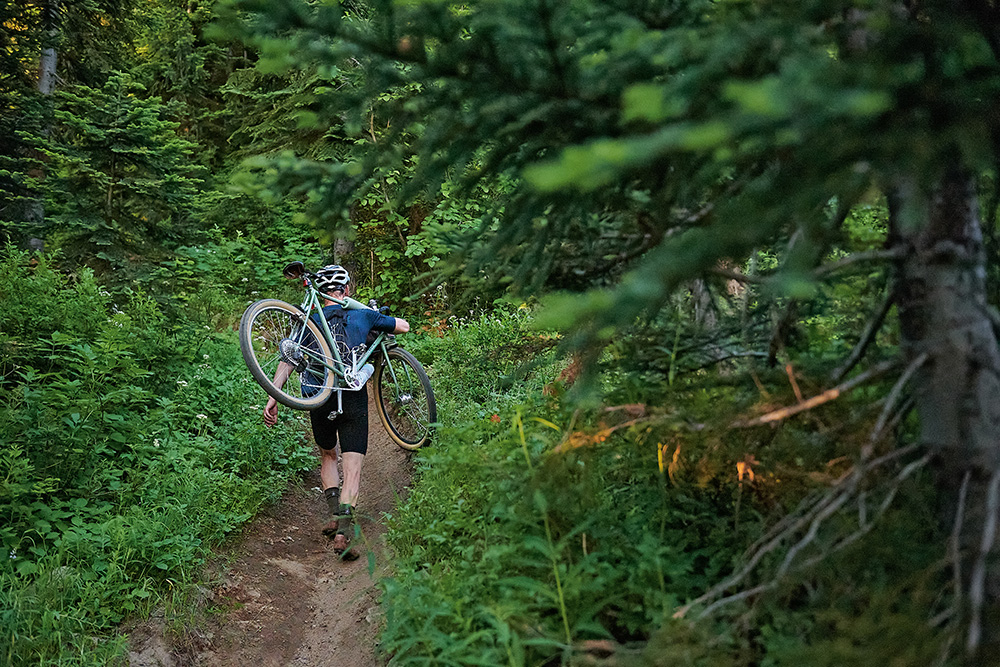
There are many great cranks out there… When I’m heading out for big adventures or races, I’m happy to ride with the low Q factor, perfect chainline, optimized gearing, superior strength, and light weight of Rene Herse cranks. And I have to admit: I like their looks, too.
Photo credits: John Pierce/Photosport International (Photo 6); Kai Caddy (Photo 7)
More Information:


